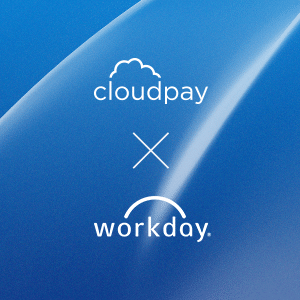At CloudPay, we’re transforming how businesses integrate payroll data through cutting-edge innovation. As part of our mission to strengthen the capabilities of automation in global payroll, we joined the Oracle Partner Network in 2022. The result of this partnership is a seamless, bi-directional integration between CloudPay and the Oracle Cloud Fusion human capital management (HCM) platform. This delivers a single source of HR and payroll information, enabling standardized and automated processes, and delivering identical experiences for every employee worldwide.
This integration allows organizations to solve some of the most pressing challenges that exist around HCM and payroll integration, including:
- Removing manual updates which are prone to human error and lack sufficient validation steps.
- Deduplicating work across multiple systems with the same information.
- Ensuring all systems and stakeholders have access to accurate, real-time data, without having to wait until the end of a payroll cycle to get it updated.
In this blog, we’ll explore how the integration of CloudPay and Oracle works in detail, and how you can take full advantage of advanced technology, automation, APIs, and artificial intelligence (AI) as a result.
The foundational elements of the HCM integration
The winning combination of CloudPay and Oracle is based on three key elements:
- Daily synchronization: the integration runs every day, meaning that any changes in Oracle can be seen and validated within CloudPay on a daily basis, instead of at the end of each payroll cycle. This enables users to make data-informed decisions based on up-to-date information.
- Fine-tuned, granular integration control: the integration works on a ‘technical user’ basis, where customers have a user account within which they can control what data is and isn’t integrated. This data control can even be integrated on a role-by-role or country-by-country basis to maximize security.
- The fastest real-time bi-directional integration: payroll data and documents can automatically be sent from CloudPay back into Oracle Cloud Fusion HCM after each payroll run, so that the information can be used for auditing and record-keeping workflows.
Under the hood: what makes CloudPay and Oracle different?
What sets the CloudPay/Oracle integration apart from other combinations of global payroll, automation and HCM is a range of unique technical features that ease the process of managing, processing, and leveraging data. These include:
- Employee document integration: this bi-directional integration removes the need for employees to access a payroll system to view and download payslips, tax documents and other statutory paperwork. All these documents are automatically filed on the Oracle Documents of Records Page through an API direct from CloudPay, which improves employee experience and cuts the admin burden on the HR team.
- Data deletion processes: records deleted in Oracle generate notifications within CloudPay so that the data in question can be handled appropriately. This notification ensures that information continues to be stored in the right way to support future audits, which enables greater transparency, and therefore aids accuracy and compliance.
- Date updating and backdating: the integration will pick up on any changes made within the Oracle HCM system, and ensure the corresponding date is attributed to the record within CloudPay, and not the date on which the change was first identified. This is important for accurate record keeping and keeping a clear audit trail.
- Accurate future-dating: similar to the previous point, any future data being entered into HCMs (such as details around a new starter who is about to begin their employment) can be entered and synchronized ahead of time. This unique capability can improve efficiency and speed up employee onboarding processes.
In Summary: why integrate Oracle with CloudPay?
By bringing together the Oracle HCM and the global payroll capabilities of CloudPay through automation, organizations like yours can phase out many of the time-consuming, error-prone manual processes that so often hold HR and payroll back. Furthermore, the integration allows this to be achieved at a truly global level. Organizations can optimize their HR and payroll processes from a single global payroll solution across all the countries they operate in.
This integration frees you from running payroll in dispersed systems from one country to the next and treating the management of HCM and payroll operations as separate endeavors. We make your pay smarter across 130+ countries, ensuring your global workforce gets paid accurately, every time.
Learn more about CloudPay’s Oracle integration capabilities, or contact CloudPay to find out more about our global payroll support.




